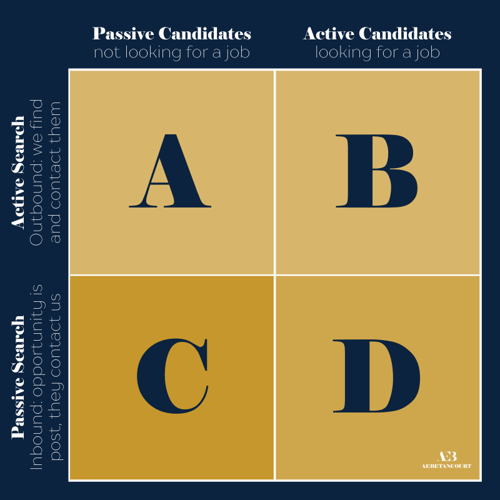As both the CEO of AEBetancourt and a dad, I’m always looking for tangible ways to teach my kids valuable lessons. After a recent trip to Walt Disney World, I was reminded again of the many teachable moments this place offers. Now stay with me for a moment.
Knowing how to hire the right person can be frustrating, especially when it isn’t your sole responsibility. Not only does Disney provide the perfect backdrop to a great family vacation, but it also serves as an ideal outline for how to hire the right person. Keep reading and you’ll see how.
Lessons from Disney on How to Hire the Right Person
Throughout our entire stay in the Magic Kingdom, my family and I were constantly delighted with the high level of service received from every employee we encountered. Their level of detail even extends to the position titles of their employees, who are referred to as Cast Members. And the show is non-stop.
One particularly friendly server at Epcot’s Rose & Crown Pub left an endearing impression on us. Her happy demeanor, genuine British accent, and local garb made us feel as if we were dining at an English pub in her hometown. As a dad, I was pleased to see my children treated with such kindness. As a recruiter, I was curious. We were all eager to hear her story and learn how this one intriguing, cheerful lady ended up at our table.
Could I really uncover how to hire like Disney? Scratch that, how to hire the right people like Disney?
The kindness of our server continued as she shared that in this specific restaurant, she began as one of 6,000 applicants, who then became part of only 400 carefully selected individuals to interview. And it was after that process where she finally became one of just 40 new hires to join the cast in Epcot at that restaurant.
An applicant pool of 6,000 is enormous! With only 40 positions available, candidates had a 0.7% chance of receiving an offer for one of those coveted roles. We were pleased to be on the receiving end of such a well-culled candidate pool that day!
Although most of us will not face the same volume and pace of hiring requirements as any of the Disney properties, we can certainly learn from their example for how to hire the right person in our organizations.
Disney’s success aligns with industry research on talent sourcing and development as well as the best practices in finding and growing talent. Significant research has been done regarding which candidate selection methods are most associated with hiring success.
This research also reveals that the most important factor in using these methods effectively is to have a large pool of candidates to choose from. Predictability in hiring increases as the size of the candidate pool increases. The data further reveals three distinct selection methods in hiring that are correlated with accurately predicting future job performance.
So once we head back home from our vacations and enchanted adventures, how do we find, hire, train, and motivate the right candidates at the right time in our arenas? This is where the “magical keys” come into play.
Magical Key #1: Build Big
The first step in understanding how to hire the right person is to adopt a willingness to build big when creating that list of potential candidates. Disney created and marketed an attractive opportunity for potential employees and brought it to the candidates: in our case, all the way to England.
Let’s go back to that significant research we mentioned a moment ago. The authors had combed through 85 years of research findings and identified two key reasons your pool of candidates should be as large as possible.
-
The larger the applicant pool, the greater the variability of skills. If you polled a group of 100 people, their collective list of skills would far out number the results from a group of just 10 people. If skill set matters in the role you are filling, expand your search criteria in order to expand the variety of skills you can attract.
-
A larger candidate pool will allow for a tighter qualification and selection process. Most organizations do not have the luxury of using the same tight selection process as Disney can, but typically fall in a selection range of 30-70% of all applicants. Using a midpoint of 50% and our same examples of 100 applicants vs. 10 applicants, would you rather have only 5 possible candidates or 50?
We must be willing to go the distance to attract candidates to the position. We must think outside of self-imposed industry-related, geographic, and stereotypical boundaries that may have historically limited candidate selection. Here are some specific ways to build big when creating a high-quality candidate pool.
Create an active search strategy for candidates
Let’s start by defining your search strategies and candidate types. There are two primary ways to interact with candidates: active or passive searches. An active search means directly reaching out and contacting prospects. Conversely, passive searches simply post opportunities on job boards and wait for candidates to respond.

Passive candidates are not currently searching, but are open to opportunities that may come their way. They are likely content in their current position and therefore not searching for yours. This means they need to be proactively found and contacted directly. There are several tools, such as LinkedIn, available to employers and recruiters that can be used to identify and target these passive candidates.
Active candidates are engaged in the process of looking for a new job. However, that doesn’t guarantee that they will see your posting, or, if they do see it, realize the possibility of being a perfect fit. There are additional resources such as online resume databases or a LinkedIn recruiter subscription where you can view whether an individual is open to new opportunities. It is important to remember that active candidates still need to be contacted directly, allowing them to personally learn about the available opportunity.
Well-written job postings can be used as a recruitment marketing tool when you are targeting a large number of candidates from non-specific backgrounds for positions that are more commonly searched, such as a salesperson. Although there are times when a passive search should be used as part of a comprehensive strategy, it is commonly referred to as the “post-and-pray method” for a reason. Most jobs will require active, targeted searches.
Use your time and resources most efficiently by actively searching for both passive and active candidates.
Build a complete profile view of who you may need to consider
Conducting an active search takes time, skill, and a thorough understanding of the requirements the individual needs to succeed in your position. But learning how to hire the right person will bring you little value if you don’t also understand who you may be looking for or even where. To effectively take on this challenge, consider building a 360 profile.
This tool builds a success framework for the position, which can translate into your search criteria when using the active search strategies defined above. The goal is to uncover the full range of possible sources in four key areas.
-
Position: List all possible roles, titles, and education that may be used to describe or identify the job you are hiring for
-
Industry: Identify primary and secondary employers, clients, and suppliers for your industry
-
Network: Consider the possible associations and connections your perfect hire may have such as business groups, clubs, and community organizations they belong to
-
Geography: Clarify where your candidates will likely live and confirm if they will need to commute, relocate, telecommute, or some combination
Defining the key search factors and the many ways they can be listed in candidate profiles will help you build a bigger candidate pool.
Magical Key #2: Create Consistencies
The second half of sharing our tips on how to hire the right person includes creating a consistent process and methodology around everything you do. Setting up a structured process means that each candidate has the same experience and is evaluated by the same criteria.
What’s more, structured interviews are twice as likely to predict a high performer than an unstructured interview. Beyond the obvious human resource compliance benefits, it also streamlines the process by maintaining efficiency and consistency in identifying the best candidates.
Define what a successful candidate looks like
Step back for a moment and think about some of your key accomplishments. Part of what made them so significant was a standard that you were measured against. You knew, in advance what the outcome would be based on preset benchmarks. You can’t find something if you don’t know what you are looking for.
Employers who want to know both how to hire and identify the perfect person should take the time to develop a Candidate Scorecard. Remember that our cheerful server at Disney represented the 0.007% of candidates that perfectly matched Disney’s requirements.
When building this scorecard, begin with a single definition of success for the role. From there, identify and evaluate what tools, talents, and traits candidates need to be successful in the role. As each candidate progresses through your interview process, specify if they are a ‘Perfect Match’, ’Match’, or ’No Match’ for each identified skill or qualification. This method allows you and your hiring team to easily compare candidates.
Use the same interviewing method every time
At this point, you have identified how you are going to approach potential candidates and where you are going to look by building a big enough target area. You have also defined how you are going to measure and qualify your candidates. The final, but equally important piece of advice for how to hire the right person is to find a reliable interview method and stick to it. Every time.
I have facilitated over 14,000 interviews in my career and use a modified version of the “A-method approach” that is simple and easily repeatable.
Depending on the role, I ask the candidate to start with their college experience and walk from past to present, through each position they have held. For each position, the candidate should review their job responsibilities, his or her greatest accomplishment there, and the reason for leaving. This allows the candidate to naturally tell their professional story and to keep their thoughts organized.
As the candidate discusses these positions, direct specific questions that relate the candidate’s job history back to your pre-defined Candidate Scorecard. Simple follow-up questions can be revealing, showing how the candidate approaches an issue, how s/he resolves it, if the candidate is a team player, and more. Don’t be afraid of pressing the candidate. It may give you insights into how the applicant deals with less hypothetical pressures in day-to-day business.
Final Thoughts About How to Hire the Right Person
Making the final selection and job offer to the right person is a critical step for company stability and growth. In their book, “Who: The A Method for Hiring”, authors Geoff Smart and Randy Street explain that the cost of a bad hire can be as much as fifteen times their base salary, while the value of a good hire can be up to three hundred times their base salary! It is easy to see how one bad hire can threaten your success on many levels, including the impact on culture and your bottom line.
Steve Jobs, another great hiring expert, said: “What an average person could accomplish and what the best person could accomplish was 50 or 100 to 1… A small team of A+ players can run circles around a giant team of B and C players."
The risk of hiring a poor fit because you are out of time, patience, or budget in your recruiting efforts is high. However, the risk of waiting for the right employee is worth taking.
Every business lives and dies on the work of its employees. Disney is wildly successful because it attracts and demands the best people for every position, every time. There are no B- or C- level cast members in their show. This philosophy and process for how to hire the right person is the most efficient pathway to organizational success, on both a financial and personnel level.
Start hiring the right people for your organization by using these Magical Keys in your hiring practices today. With these steps you will see profits increase, employee turnover decrease, and, maybe most importantly, your customer and employee satisfaction soar when talent acquisition and development is on target.
Curious if your talent acquisition methods are on the right path? Download our guide today with helpful tips for finding your perfect-fit hire.


.png)
.png)
.png)
.png)
.png)


